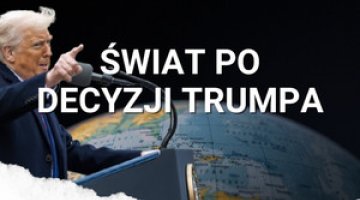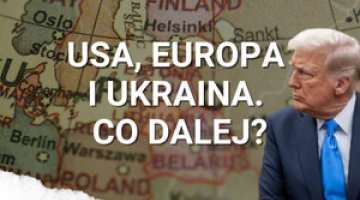The EU’s strategic energy partnership with the US after a year of war
The tenth meeting of the EU-US Energy Council was held in Brussels on 4 April. The EU was represented by the High Representative for Foreign Affairs and Security Policy Josep Borrell, Energy Commissioner Kadri Simson and the Swedish foreign minister Tobias Billström, whose country currently holds the EU Council Presidency; the US was represented by Secretary of State Antony Blinken and US Deputy Secretary of Energy David M. Turk. The two sides noted the unprecedented intensification of cooperation, coordination and trade between the United States and the European Union over the past year, related to Russia’s war against Ukraine. An important role in this bilateral cooperation has been played by the joint Energy Security Task Force, which US President Joe Biden and EC President Ursula von der Leyen established in March 2022 to support elimination of the EU’s dependence on Russian gas (for more details, see ‘A strategic gas alliance between the EU & the US’).
The key topics of the Council’s joint statement concerned cooperation in activities concerning:
- limiting the energy-related consequences of the Russian aggression against Ukraine,
- increasing energy security in Ukraine and Moldova, but also in Europe and around the world,
- accelerating energy transition, and the development of new technology & innovation.
In a statement, the EU and the US once again condemned the war against Ukraine, which has triggered a global energy crisis, and Russia’s attacks on Ukraine’s critical infrastructure, including its energy systems. The aggression against the Zaporizhzhia Nuclear Power Plant came in for particular criticism. In the face of the increased risk to the physical and cyber security of energy infrastructure, Brussels and Washington plan further cooperation in this area, including in the context of synchronising the Baltic states’ electricity grids with those of continental Europe (and the ENTSO-E system). The Council also reaffirmed its support for the recovery and reconstruction of Ukraine and Moldova, including their energy sectors, and for their eventual integration into the EU, including by accelerating the expansion of their energy infrastructures and cross-border connections. Both the EU and the US aim to continue to provide Ukraine with the necessary emergency energy assistance. The Council also wants to intensify efforts to reduce the dependence of individual European countries on Russian nuclear fuel supplies and fuel cycle services, including by promoting diversification of supplies.
The EU and the US aim to continue to work together to contribute to the stability of global energy markets and the continuation of the energy transition. In doing so, they are reaffirming their strong commitment to respond directly to any moves to further destabilise these markets and circumvent sanctions. Increasingly, energy security is to be enhanced by accelerating decarbonisation and taking steps toward achieving climate goals. Brussels and Washington want to coordinate their efforts in this area in countries neighbouring the EU; this includes the Western Balkans, where the two sides want to accelerate the energy transition and make the region’s countries less dependent on gas from Russia. The Council has also stressed the importance of the energy partnership with regard to security of supplies to the EU (regarding both renewables and gas) and critical energy infrastructure with the countries in the South Caucasus, Black Sea, Eastern Mediterranean and North Africa.
The two parties emphasised the role of cooperation in devising energy and climate policies, facilitating trade and disseminating energy conservation & renewable energy technologies through the EU and the US. In this context, cooperating in fostering investments supporting the transition and path towards climate neutrality, and avoiding zero-sum transatlantic competition will be particularly important. In this area, diversifying and ensuring the security of supply chains for critical minerals raw materials and minerals is key. The role nuclear energy can play in decarbonising energy systems was also highlighted, and a transatlantic High-Level Small Modular Reactors (SMR) Forum was announced. Efforts to reduce global methane emissions will also continue.
Commentary
- In 2022 the US became a key energy partner for the EU. This was particularly evident with regard to natural gas. American supplies of LNG rose by more than 150% last year compared to 2021, to 56 bcm. This growth more than doubled the 15 bcm which President Biden announced last March in a joint statement with President von der Leyen (see ‘A strategic gas alliance between the EU & the US’). Continued cooperation and ensuring stable supplies of LNG will continue to be important in the next few years (and especially the immediate future, as the situation on the EU gas market may prove more difficult than in 2022). As a result, the working group is expected to seek to guarantee the supply of at least 50 bcm of US LNG to the EU in 2023 (possibly through the EU’s joint purchasing platform, among other methods), and to increase energy savings and efficiency, in the hope that this will reduce fuel consumption.
- Brussels and Washington’s cooperation has also been important in other areas: these include assisting the recovery and rebuilding of Ukraine’s energy infrastructure; ensuring the supply of essential energy equipment, fuels and electricity to Ukraine and Moldova; and supporting the Western Balkan countries in their gradual transition to non-Russian energy sources. An important forum for coordinating the aid for Ukraine was the G7, which in January launched the Multi-agency Donor Coordination Platform. This group brings the G7 countries, Ukraine and the EU together with international financial institutions (including the EIB, EBRD, IMF and World Bank), and has a secretariat in Brussels. At the same time, the United States (including through the US Agency for International Development, USAID) is also involved in helping Ukraine through existing EU tools and platforms, including the Energy Community.
- Washington and Brussels have also (largely within the G7) worked together in drawing up restrictions targeting Russian energy exports, primarily oil and petroleum products. US/EU cooperation has proved crucial in setting and implementing price limits on crude oil and petroleum products from Russia. Their cooperation will also be particularly important in the short to medium term when adjusting the limits to the market situation, guaranteeing that the sanctions agreed remain tight, and preventing their circumvention and violation, and finally in stabilising the global oil market (this in the context of recent and possible further production cuts by OPEC+ countries). In addition, we can see an intensification of cooperation on nuclear energy, including on the US supplies of technology and nuclear fuel to some EU countries, especially in Central and South-eastern Europe.
- The Energy Council is another forum where the EU and the United States can work to ease tensions over the US Inflation Reduction Act (IRA), which was passed last year to support the domestic economy through means including preferential conditions for investment in green energy. The Clean Energy Incentives Dialogue, which President Biden and President von der Leyen inaugurated on 10 March, was a signal that Washington and Brussels want to come to an agreement on the issue. In a joint statement at the time, the leaders announced that they would begin work on strengthening and diversifying supply chains of critical minerals, including a transatlantic targeted agreement on critical minerals allowing EU companies to take advantage of the tax credits for electric vehicles contained in the IRA. These statements were supported by some points of the Energy Council statement, including one stating that the transatlantic partners should avoid taking any actions in their efforts to achieve climate neutrality that would divisively lead to any zero-sum competition which could create ‘winners and losers’.




